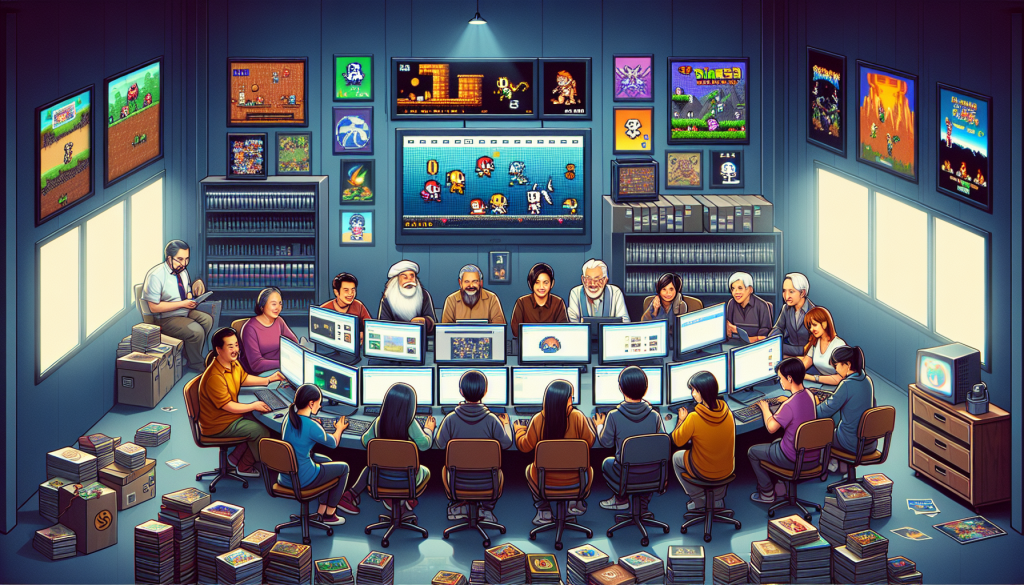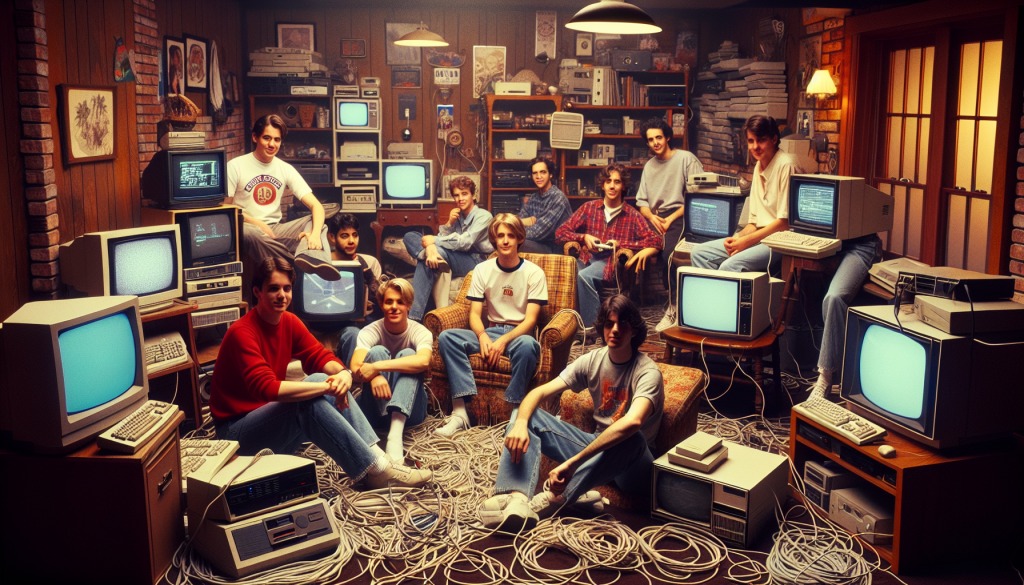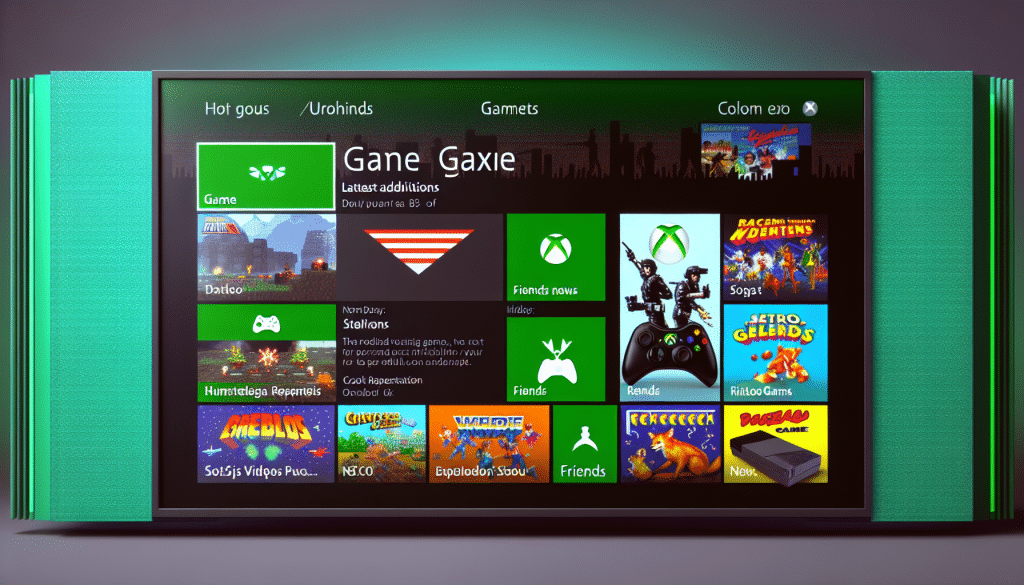Exploring the Narrative Structures in Gaming and Literature
If you’re a fan of both books and video games, you’ve probably noticed that these two mediums share some key similarities. But have you ever taken a moment to consider just how much the two intersect? At the heart of both medium is narrative and storytelling, and examining the narrative structures in both can be a fascinating exercise. So, let’s dive in!
Understanding Narrative Structures
First, it’s important to understand what we mean by narrative structures. Whether we’re talking about literature or gaming, narrative structure refers to the sequence of events that make up the story. It’s the way these events are organized and presented to the audience.
Linear vs Non-Linear Narratives
In literature, we’re often presented with what’s known as a linear narrative. This is a story that unfolds in a straight line, from beginning to end. Think of most classic novels, like ‘Pride and Prejudice’ or ‘Moby Dick. The story starts at point A and ends at point B, with a clear progression of events in between.
Gaming, on the other hand, often utilizes non-linear narratives. In a video game, players might be able to choose different paths or make decisions that affect the outcome of the story. Games like ‘Mass Effect’ or ‘The Witcher’ series are well-known for these branching storylines.
Role of Characters
- Literature: Characters play a pivotal role in shaping the narrative structure. The story unfolds based on their actions, decisions, and experiences. Readers experience the story through their eyes, interpreting the world constructed by the author as per the viewpoint of these characters.
- Gaming: Much like literature, characters in video games drive the story. However, there’s an added layer of interactivity. Players don’t just observe character’s actions – they actively control them, making choices that drive the story forward.
While both literature and gaming have their unique narrative structures, they also share a common goal – to engage the audience and create an immersive experience. The exploration of narrative structures in these two mediums is not just interesting, but also enriches our understanding of storytelling as an art.
Final Thoughts
Understanding the narrative structures in both gaming and literature opens up a whole new world of appreciation for these art forms. So next time you pick up a book or start a new game, take a moment to consider the narrative structure. You might just find it adds an extra layer of enjoyment!
Evolution and Influence of Gaming on Modern Literature
Welcome, dear reader, to a journey into a fascinating realm where the worlds of literature and gaming intersect. We’re going to explore the surprising ways in which the evolution of gaming has influenced modern literature. Sit back, relax, and enjoy the ride!
A New Era of Interactive Storytelling
So, where do we begin? Well, let’s start with the dawn of the video game era. With the advent of video games, we witnessed the emergence of a new form of storytelling, one that allowed for a deeper level of interactivity. This was a game-changer (pun intended) for narrative structures, shifting the needle from passive consumption to active engagement.
In games, players become active participants in the story, making their own decisions, and shaping the narrative’s direction. This kind of immersive storytelling began to influence modern literature, encouraging authors to experiment with more interactive and engaging narrative structures.
The Influence of Game Mechanics
The influence of gaming goes beyond the mere aspect of interactivity. Consider the game mechanics themselves. In gaming, the idea of ‘levels’ or ‘stages’ is a familiar concept. This idea has been subtly integrated into the structural design of modern literary works, creating a sense of progression, challenge, and achievement akin to that found in video games.
Ever encountered a novel where the chapters felt like different ‘levels’ of the story, each with its unique challenges and reveals? That’s gaming’s influence right there!
Choose Your Adventure
Think about the ‘Choose Your Adventure’ books. These literary works directly borrow the idea of choice-based narratives from gaming. The reader, much like a game player, is given the power to decide the character’s path, making them a part of the storytelling process in an immersive and interactive way.
World-Building and Character Development
One more point worth mentioning is how gaming has influenced world-building and character development in modern literature. Games are known for their elaborate, immersive worlds and detailed, evolving characters.
Modern authors, inspired by this, are now spending more time creating rich, vibrant worlds and well-rounded characters, enhancing the reader’s experience and immersion in the story.
So, there you have it! A look at how the evolution of gaming has played a significant role in shaping modern literature. We hope you found this exploration as exciting as we did. Remember, the next time you pick up a book or play a game, take a moment to appreciate the influence they have on each other. Happy reading and gaming!
Storytelling Techniques: A Comparative Analysis of Literature and Gaming
Let’s take a fun little journey today as we get ready to dive into the awesome world of storytelling. We’re going to explore and compare the storytelling techniques in two of our favourite mediums: literature and gaming. Sounds exciting, right?
Plot Development: From Books to Games
When it comes to literature, the plot unfolds in a linear fashion, usually from point A to point B. The reader passively follows the story as it is laid out by the author. That’s the beauty of written works; they transport us into the author’s mind, as we follow their vision of the narrative.
Now, let’s talk about gaming. In games, the plot develops based on the player’s actions. It’s a more interactive narrative and often non-linear, creating a unique experience for each player. This adds a layer of complexity to the narrative, as the game designers need to plan for multiple outcomes.
Character Development: The Reader vs. The Player
In literature, we see character development through the eyes of the narrator or through the thoughts, words, and actions of the characters themselves. We have no control over the characters; we can only empathize with them and hope for their best.
Conversely, in gaming, the player is the character. The characters’ evolution depends on the players’ choices, creating a deeper emotional connection. Isn’t that cool?
World-Building: Imagination vs. Visualization
World-building in literature is left to the reader’s imagination, guided by the author’s descriptions. Each reader gets to create a unique vision of the world inside their minds. It’s like having your very own painting of the story.
In contrast, gaming provides a visual representation of the world. Advanced graphics and design allow players to explore the world in 3D, making the experience more immersive.
- Do you want to imagine the world, or do you want to see it?
- Do you want to follow a character, or do you want to be one?
- Do you favor a linear narrative, or do you enjoy making choices that affect the storyline?
Here’s where the magic happens: there’s no right or wrong answer. Whether you’re a bookworm, a gaming fanatic, or both, the essence of storytelling remains the same: to engage, to entertain, and to evoke emotions.
Isn’t it wonderful how diverse storytelling techniques can give us different yet equally enchanting experiences? So, what’s your pick, my friend? Books, games, or a little bit of both?
The Role of Interactivity in Gaming and Its Implications for Literary Works
Interactivity isn’t just about clicking buttons or swiping screens; it’s about engagement, immersion, and a sense of control. It’s an essential aspect of gaming, but how does it translate to literature? Let’s dive into it.
A Whole New Level of Engagement
When we play video games, we’re not just passive observers. We’re active participants, influencing the story, making decisions, and oftentimes, shaping the characters. This level of interactivity creates an intimate connection between us and the game. On the other hand, traditional literature primarily offers a one-way communication, where the story is laid out for us. But imagine if we could interact with literature in the same way that we do with games? That would be a game-changer, wouldn’t it?
Interactivity in Literature: The Potential
It’s not entirely unheard of. Choose your own adventure books, for instance, have been offering interactive reading experiences for years. Here, readers decide the course of the story, making it a personal journey. But we’re just scratching the surface of interactivity in literature.
- Interactive eBooks could allow readers to explore different plotlines, backgrounds, and even alternate endings.
- Augmented Reality (AR) can make characters and scenarios literally leap off the page.
- Artificial Intelligence (AI) could customize books based on reader preferences, making literature a personalized experience.
Challenges and Considerations
While the potential for interactivity in literature is exciting, there are challenges to consider. It’s crucial to maintain the integrity and depth of the narrative while integrating interactivity. Authors would need to craft multiple robust storylines without diluting the essence of the plot.
Another consideration is the reader’s role. In gaming, players directly influence the game. In literature, the reader’s role is traditionally more passive. Shifting this dynamic could be a paradigm shift, but one that needs careful consideration.
Looking Ahead
The future holds exciting possibilities for blending interactivity from gaming into literature. Technology will play a significant role, and we might be looking at a whole new genre of interactive literature.
The day might not be too far off when we don’t just read about the hero’s journey, but actively participate in it. So, gear up, because the future of literature could be more engaging and immersive than ever before.













11 thoughts on “Literary Worlds Collide: Gaming in Literature”
Thank you for your sharing. I am worried that I lack creative ideas. It is your article that makes me full of hope. Thank you. But, I have a question, can you help me?
Wow, marvelous blog structure! How lengthy have you ever been running a blog for?
you made running a blog glance easy. The overall look of your web site is excellent, as well
as the content! You can see similar here sklep online
After I initially commented I seem to have clicked the -Notify me when new comments are added- checkbox and now each time a comment is added I receive four emails with the same comment. There has to be an easy method you are able to remove me from that service? Thanks a lot!
I have to thank you for the efforts you’ve put in writing this site. I am hoping to see the same high-grade blog posts from you later on as well. In fact, your creative writing abilities has encouraged me to get my very own site now 😉
It’s nearly impossible to find knowledgeable people in this particular subject, however, you seem like you know what you’re talking about! Thanks
I’m extremely pleased to discover this great site. I wanted to thank you for your time for this fantastic read!! I definitely really liked every part of it and i also have you bookmarked to check out new things on your website.
Excellent article. I’m going through many of these issues as well..
This blog was… how do I say it? Relevant!! Finally I’ve found something which helped me. Many thanks!
I was able to find good advice from your blog posts.
Good article! We will be linking to this great content on our website. Keep up the great writing.
I’m extremely pleased to find this great site. I want to to thank you for your time for this particularly fantastic read!! I definitely liked every little bit of it and I have you book marked to look at new things in your website.